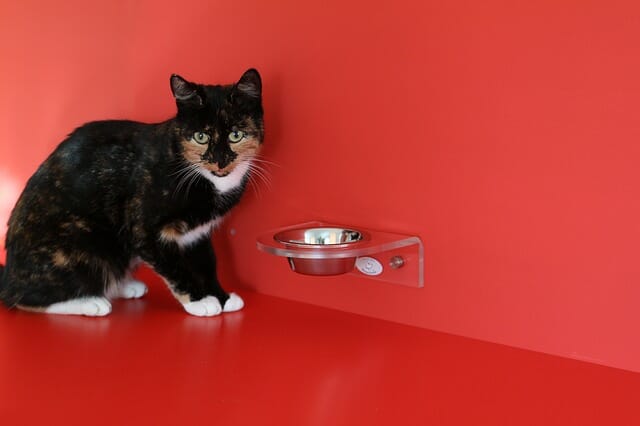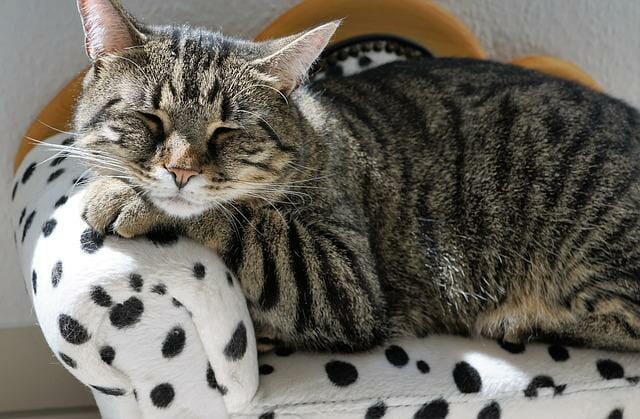How Do Cats Get Tapeworms: Signs and Symptoms of Tapeworms and How to Get Rid of It
Cats can get tapeworms from ingesting fleas or small animals, such as rodents or birds, that are infected with tapeworms. Tapeworms are intestinal parasites that live in the digestive tract of cats and other animals. When an infected flea is ingested during grooming, the tapeworm larvae inside the flea can develop into adult tapeworms in the cat’s intestines. The tapeworm larvae can develop into adults if a cat ingests an infected rodent or bird.
Table of Contents
Signs and Symptoms of Tapeworms in Cats


Visible Worm Segments
Visible worm segments are a common sign of tapeworms in cats. These segments are small white or yellowish rice-like pieces that can be seen around the cat’s anus or in their feces, according to VCA Animal Hospital. The segments are proglottids, or packets of eggs, that have been shed from the adult tapeworm living in the cat’s intestines.
These segments can sometimes be seen moving around the area, and they may cause irritation and itching, leading the cat to lick or bite the area excessively. However, in some cases, cats with tapeworms may not show any symptoms.
It’s important to note that while tapeworms in cats are generally not harmful, they can cause discomfort and irritation for the cat. Additionally, it’s important to have your cat treated for tapeworms to prevent the spread of the parasite and to keep your cat healthy. Treatment typically involves medication to eliminate the tapeworms, and preventive measures such as flea control can help reduce the risk of infection.
Weight Loss
Weight loss is a possible symptom of tapeworms in cats, although it is not always present. In severe cases of tapeworm infection, the cat may experience a decrease in appetite and overall body weight. This happens because the tapeworms absorb the nutrients from the cat’s food, which can cause malnutrition and weight loss over time.
If you suspect your cat has tapeworms, scheduling a veterinary exam for proper diagnosis and treatment is important. Your veterinarian may recommend a fecal exam to check for the presence of tapeworm eggs or segments and prescribe medication to eliminate the tapeworms.
Additionally, preventive measures such as flea control can help reduce the risk of tapeworm infection in cats. If weight loss is observed, your vet may also suggest additional tests to rule out other underlying medical issues that could be causing the weight loss.
Irritation and Itching
Irritation and itching around the anus are common symptoms of tapeworms in cats. This happens because the tapeworm segments, or proglottids, shed from the adult tapeworms living in the cat’s intestines can cause discomfort and irritation around the anus area. In addition, the cat may excessively lick or bite the area, leading to hair loss, redness, and inflammation.
It’s important to note that while tapeworms in cats are generally not harmful, they can cause discomfort and irritation for the cat. Additionally, it’s important to have your cat treated for tapeworms to prevent the spread of the parasite and to keep your cat healthy. Treatment typically involves medication to eliminate the tapeworms, and preventive measures such as flea control can help reduce the risk of infection.
Vomiting
Although uncommon, vomiting is a possible symptom of tapeworms in cats. Sometimes, the cat may vomit tapeworms, which can be seen in their vomit. This happens when the tapeworm segments become detached from the adult tapeworms living in the cat’s intestines and move into the stomach.
Suppose you notice your cat vomiting or experiencing other signs of discomfort, such as weight loss, decreased appetite, or excessive licking or biting of the anus area. In that case, scheduling a veterinary exam for proper diagnosis and treatment is important.
Diarrhea
Although uncommon, diarrhea is a possible symptom of tapeworms in cats. In some cases, tapeworms in the cat’s intestines can cause irritation and inflammation, leading to diarrhea.
Your vet may recommend a fecal exam to check for tapeworm eggs or segments, prescribe medication to eliminate the tapeworms, and suggest a diet change or probiotics to help soothe the gastrointestinal tract.
Treatment for Tapeworms in Cats


The treatment for tapeworms in cats typically involves medication to eliminate them tapeworms. For example, your veterinarian may prescribe an oral medication such as praziquantel, which effectively kills cat tapeworms. The medication can come in tablets, injections, or spot-on applications.
It’s important to note that while the medication can effectively eliminate the adult tapeworms in the cat’s intestines, it may not be effective against the eggs or immature tapeworms that may be present in the cat’s environment. Thus, taking preventive measures such as flea control is important to help reduce the risk of tapeworm infection.
In addition to medication, your veterinarian may recommend additional treatments or supportive care depending on the severity of the tapeworm infection and any other symptoms present. For example, if the cat is experiencing diarrhea or other gastrointestinal issues, your vet may suggest a diet change or probiotics to help soothe the gastrointestinal tract. Your vet may also recommend regular fecal exams and deworming protocols to prevent re-infection.
Preventing Tapeworms in Cats
Flea Control
Flea control is important in preventing cat tapeworms, as fleas are a common source of tapeworm infection. There are several methods for flea control in cats:
- Topical flea control products: These products are applied directly to the cat’s skin, typically between the shoulder blades, and can provide several weeks of protection against fleas. Examples include products containing fipronil, imidacloprid, or selamectin.
- Oral flea control products: These products are given orally to the cat and can provide several weeks of protection against fleas. Examples include products containing nitenpyram, lufenuron, or spinosad.
- Flea collars: Flea collars can effectively prevent flea infestations, but they may not be as effective as other methods and can irritate some cats.
- Environmental control: To prevent flea infestations in your home, it’s important to regularly vacuum carpets and upholstery, wash bedding and other fabrics that your cat comes into contact with, and use insecticides or other flea control products in your home.
Good Hygiene
Practicing good hygiene is important in preventing tapeworms and other infections in cats. After handling your cat, their litter box, or any contaminated items, wash your hands thoroughly with soap and water. Clean your cat’s litter box regularly, and use gloves and a face mask to prevent exposure to infectious agents.
Dispose of your cat’s waste in a sealed plastic bag and dispose of it in a trash can that is kept away from other animals and humans. Regular grooming, including brushing your cat’s fur and wiping its paws, can help remove any tapeworm eggs or fleas that may be present. Prevent your cat from scavenging or hunting rodents, birds, or other prey animals infected with tapeworms.
Regular Deworming


Regular deworming is important in preventing tapeworms and other intestinal parasites in cats. Your veterinarian can recommend an appropriate cat deworming schedule based on age, lifestyle, and risk factors. Kittens should be dewormed at 2-3 weeks of age and every 2-3 weeks after that until 12 weeks. After that, they should be dewormed at least once every three months.
Adult cats should be dewormed at least once every 3-6 months or more often if they are at increased risk of infection. Cats that spend time outdoors or have access to outdoor areas are at increased risk of infection and may require more frequent deworming. Pregnant cats should be dewormed before breeding and during pregnancy to reduce the risk of transmission to their kittens.
Avoiding Raw or Undercooked Meat
Avoiding raw or undercooked meat is another important way to prevent cat tapeworms and other parasitic infections. For example, raw or undercooked meat can contain tapeworm eggs or larvae, which can infect your cat if they ingest the contaminated meat.
High-quality commercial cat food is formulated to meet your cat’s nutritional needs and is typically free from raw or undercooked meat. If you choose to feed your cat cooked meat, ensure it is cooked thoroughly to an internal temperature of at least 165 degrees Fahrenheit to kill potential parasites.
Raw or undercooked meat, including raw fish, poultry, or beef, should be avoided to reduce the risk of infection. If you feed your cat a homemade diet, consult a veterinary nutritionist to ensure that the diet is balanced and free from raw or undercooked meat.
